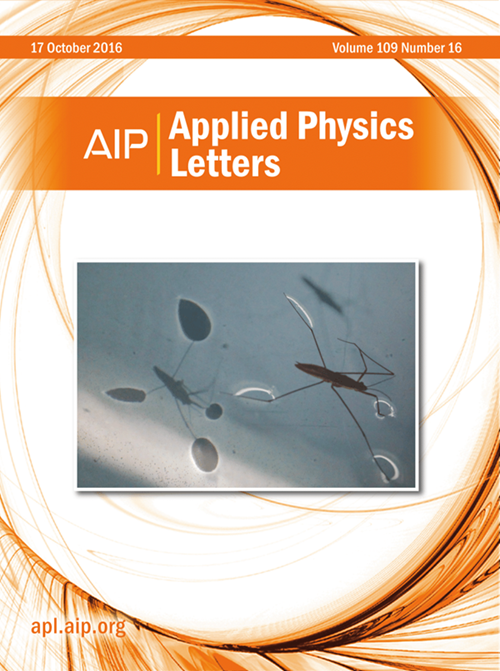Effect of 20 MeV proton irradiation on the electrical properties of β-Ga2O3 Schottky barrier diodes with field plate
IF 3.5
2区 物理与天体物理
Q2 PHYSICS, APPLIED
引用次数: 0
Abstract
In this Letter, the impact of 20 MeV proton irradiation on β-Ga2O3 Schottky barrier diodes (SBDs) with field plates has been investigated. After proton irradiation with fluences of 2 × 1012 and 5 × 1012 p/cm2, the forward current density (JF) decreased from 294.0 to 250.5 and 192.0 A/cm2, respectively. The turn-on voltage (Von) increased from 0.78 to 0.82 and 0.84 V, as measured by current–voltage (I–V) testing. Capacitance–voltage (C–V) measurements showed that the net carrier concentration in the lightly doped drift region of β-Ga2O3 decreased from 1.95 × 1016 to 1.83 × 1016 and 1.38 × 1016 cm−3 after proton irradiation. Additionally, C–V measurements at different frequencies reveal that capacitance gradually decreases as proton fluence increases, though the frequency has little effect on capacitance. The effect of proton irradiation on β-Ga2O3 SBDs was also characterized using low-frequency noise and x-ray photoelectron spectroscopy. The results indicated that the voltage noise spectral density (Sv) gradually increases with proton fluence and bias voltage before and after irradiation due to the introduction of defects. This study provides an important reference for the reliability assessment of β-Ga2O3 SBDs.20mev质子辐照对场极板β-Ga2O3肖特基势垒二极管电性能的影响
本文研究了20 MeV质子辐照对带场极板的β-Ga2O3肖特基势垒二极管(sdd)的影响。质子辐照2 × 1012和5 × 1012 p/cm2后,正向电流密度(JF)分别从294.0降低到250.5和192.0 A/cm2。通过电流-电压(I-V)测试测量,导通电压(Von)从0.78增加到0.82和0.84 V。电容电压(C-V)测量结果表明,质子辐照后,β-Ga2O3轻掺杂漂移区的净载流子浓度从1.95 × 1016下降到1.83 × 1016和1.38 × 1016 cm−3。此外,不同频率下的C-V测量表明,电容随着质子通量的增加而逐渐减小,但频率对电容的影响不大。利用低频噪声和x射线光电子能谱分析了质子辐照对β-Ga2O3 sdd的影响。结果表明,由于缺陷的引入,辐照前后的电压噪声谱密度(Sv)随着质子通量和偏置电压的增加而逐渐增大。该研究为β-Ga2O3 sbd的可靠性评估提供了重要参考。
本文章由计算机程序翻译,如有差异,请以英文原文为准。
求助全文
约1分钟内获得全文
求助全文
来源期刊

Applied Physics Letters
物理-物理:应用
CiteScore
6.40
自引率
10.00%
发文量
1821
审稿时长
1.6 months
期刊介绍:
Applied Physics Letters (APL) features concise, up-to-date reports on significant new findings in applied physics. Emphasizing rapid dissemination of key data and new physical insights, APL offers prompt publication of new experimental and theoretical papers reporting applications of physics phenomena to all branches of science, engineering, and modern technology.
In addition to regular articles, the journal also publishes invited Fast Track, Perspectives, and in-depth Editorials which report on cutting-edge areas in applied physics.
APL Perspectives are forward-looking invited letters which highlight recent developments or discoveries. Emphasis is placed on very recent developments, potentially disruptive technologies, open questions and possible solutions. They also include a mini-roadmap detailing where the community should direct efforts in order for the phenomena to be viable for application and the challenges associated with meeting that performance threshold. Perspectives are characterized by personal viewpoints and opinions of recognized experts in the field.
Fast Track articles are invited original research articles that report results that are particularly novel and important or provide a significant advancement in an emerging field. Because of the urgency and scientific importance of the work, the peer review process is accelerated. If, during the review process, it becomes apparent that the paper does not meet the Fast Track criterion, it is returned to a normal track.
 求助内容:
求助内容: 应助结果提醒方式:
应助结果提醒方式:


